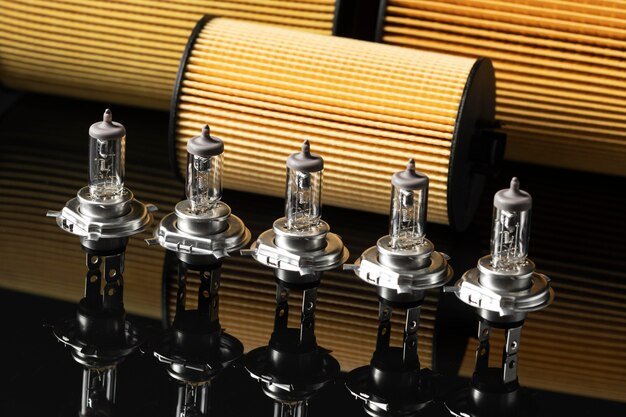Introduction
So, you’re thinking about doing something a little out of the ordinary: retrofitting a BMW 335i diff retrofit ford differential into a Ford. While it may sound like a challenging project, it’s actually an exciting way to upgrade your Ford’s performance, handling, and overall driving experience. For car enthusiasts who love to experiment and mix components across different brands, this retrofit can be the perfect way to gain more traction, improve torque distribution, and boost power delivery.
In this post, we’ll walk you through why a 335i diff retrofit ford might just be the right choice for your Ford, what benefits it brings, and some practical steps on how to get started.
Why Choose a 335i Differential for Your Ford?
The differential is one of the key components that determines how smoothly and effectively power from the engine reaches the wheels. BMW 335i models are known for their powerful, well-designed differentials that offer excellent traction control and torque management, especially in high-performance settings. Swapping a BMW 335i differential into a Ford can help improve traction, increase power control, and, for many drivers, add an overall “sporty” feel to the car.
Benefits of Using a BMW 335i Differential
- Better Traction: With the right differential, you can experience smoother traction, especially when driving on challenging terrains or around sharp corners.
- Improved Torque Distribution: This means better handling and stability, especially at higher speeds.
- Enhanced Durability: BMW 335i differentials are built for performance, making them more durable and reliable over time.
What to Know Before Starting the Retrofit
Before diving into this project, it’s essential to make sure you have a clear plan and the right tools. Here are some factors to consider:
Compatibility
- Not all differentials are universally compatible. Check the specs for both your Ford model and the BMW 335i differential to ensure they’re compatible in terms of size and function.
- You may need to make some modifications to get the differential to fit properly.
Tools and Resources
- You’ll need basic tools like wrenches, sockets, jacks, and safety gear.
- Depending on your Ford model, you might also require a special mounting kit or adapter for the differential.
Budget and Time
- While this retrofit isn’t extremely costly, you’ll need to budget for the differential itself, any required adapters, and potential labor costs if you’re hiring help.
- Make sure you have a good chunk of time set aside. Retrofits like this one can take a few hours, especially if it’s your first time.
Step-by-Step Guide to the 335i Differential Retrofit
Step 1: Gather Your Parts and Tools
Before you start, gather all necessary parts and tools, including:
- BMW 335i differential
- Necessary adapters or mounting brackets
- Wrenches, socket set, jack stands, and safety gear
Having everything ready before you start makes the process smoother and less frustrating.
Step 2: Prepare Your Ford
Park your Ford on a flat surface and ensure it’s safely jacked up. You’ll need clear access to the underbody of the vehicle to remove the old differential and install the new one.
Step 3: Remove the Existing Differential
Locate your Ford’s existing differential and start by disconnecting any related wiring and bolts. Carefully slide out the differential and set it aside. This step requires precision, so take your time and be cautious.
Step 4: Install the BMW 335i Differential
Using your mounting kit or adapters, position the 335i differential in place. Carefully secure it with bolts and ensure that it’s tightly fitted. This might require some adjustment, so take your time to make sure everything lines up correctly.
Step 5: Test for Proper Alignment and Fit
Once the new differential is in place, lower the vehicle and do a short test drive at low speeds. Listen for any unusual noises or vibrations. If everything sounds and feels smooth, you’re ready to hit the road with your upgraded setup.
Tips for Maintaining Your New Differential Setup
After completing your 335i differential retrofit, regular maintenance will keep it in top shape. Here are a few tips:
- Check Fluid Levels: Keep an eye on your differential fluid and top it up as needed.
- Inspect for Leaks: Leaks can affect the performance of your differential, so inspect it regularly.
- Listen for Noises: If you hear any unusual sounds from the rear of your car, it could indicate an issue with the differential. Don’t ignore it.
Conclusion
Retrofitting a BMW 335i diff retrofit ford differential into a Ford is a project that can take your car’s performance to the next level. With better traction, enhanced durability, and improved torque distribution, you’ll experience a noticeable difference in how your car handles on the road. It’s a bit of a challenge, but if you’re up for it, the results are worth the effort!
FAQs
Q: Is the BMW 335i differential compatible with all Ford models?
A: No, not all Ford models will be compatible. Make sure to check compatibility for your specific model, and be prepared for some adjustments.
Q: Do I need any special tools for the retrofit?
A: Basic car tools should be enough, but depending on your Ford model, you might need an adapter kit to fit the BMW 335i differential.
Q: Can I do this retrofit on my own, or should I hire a professional?
A: If you’re comfortable working with cars, you can try it yourself. However, if you’re new to retrofits, getting help from a professional is a good idea.
Q: How long does the 335i differential retrofit usually take?
A: The process can take a few hours, especially if it’s your first time. It’s a good idea to set aside a half-day for this project.
Q: Are there any risks to installing a different differential?
A: If done correctly, the retrofit should be safe. However, improper installation could lead to performance issues, so make sure to follow each step carefully or get help if needed.
visit for more Blogs chiangraitimes

